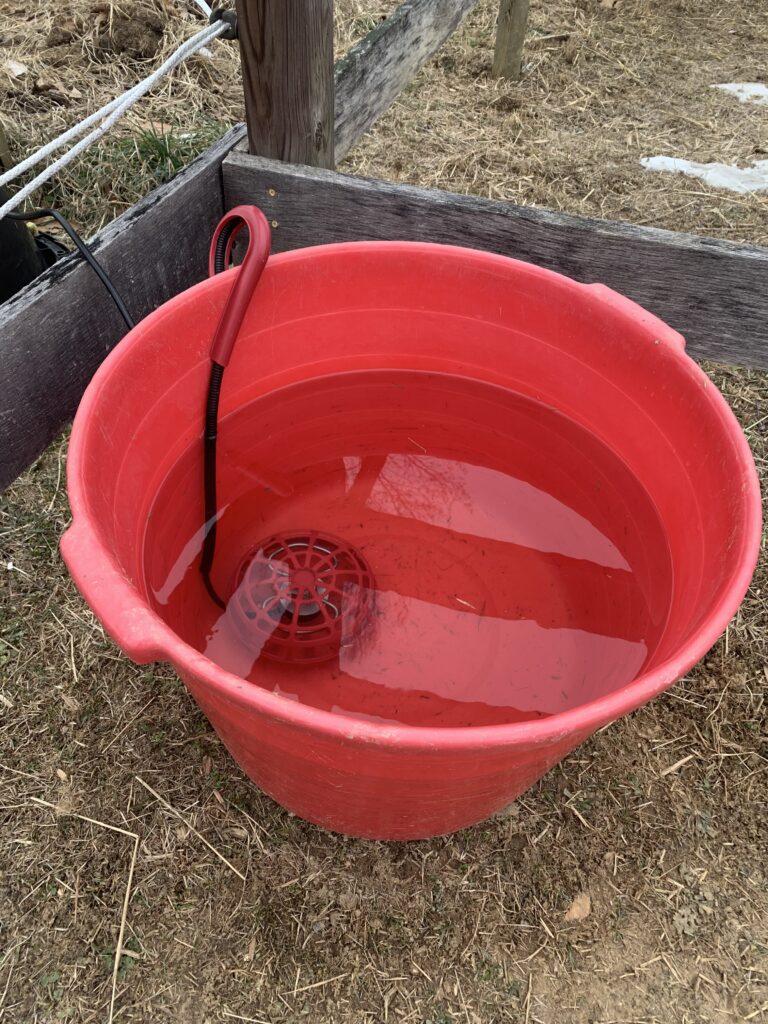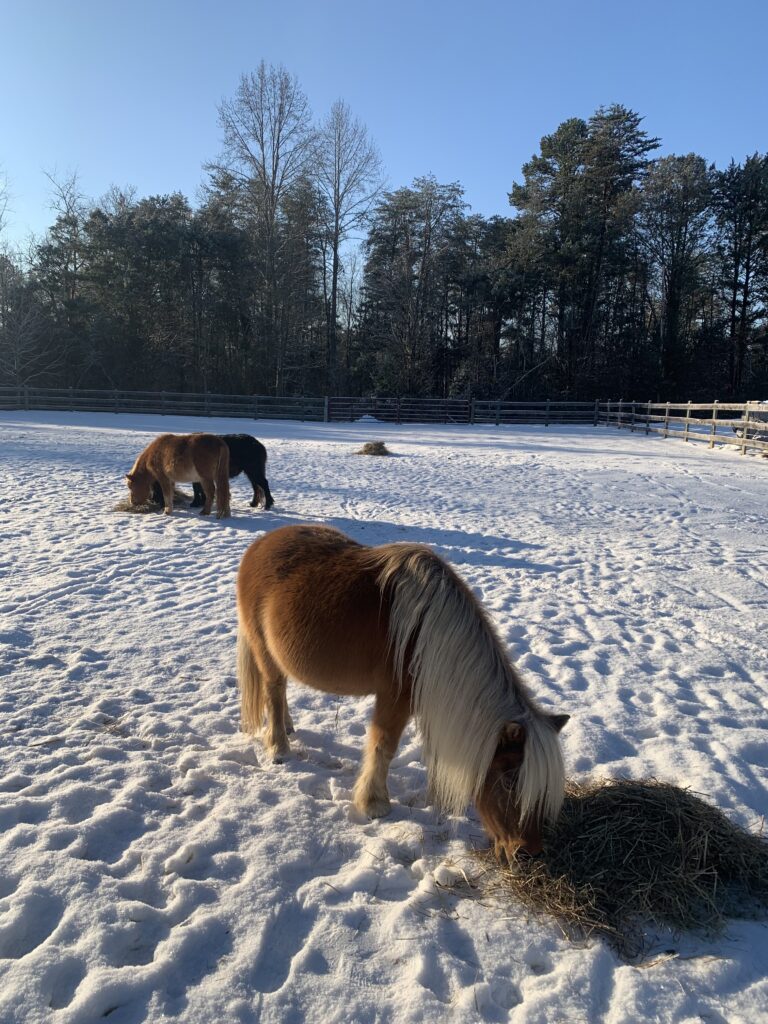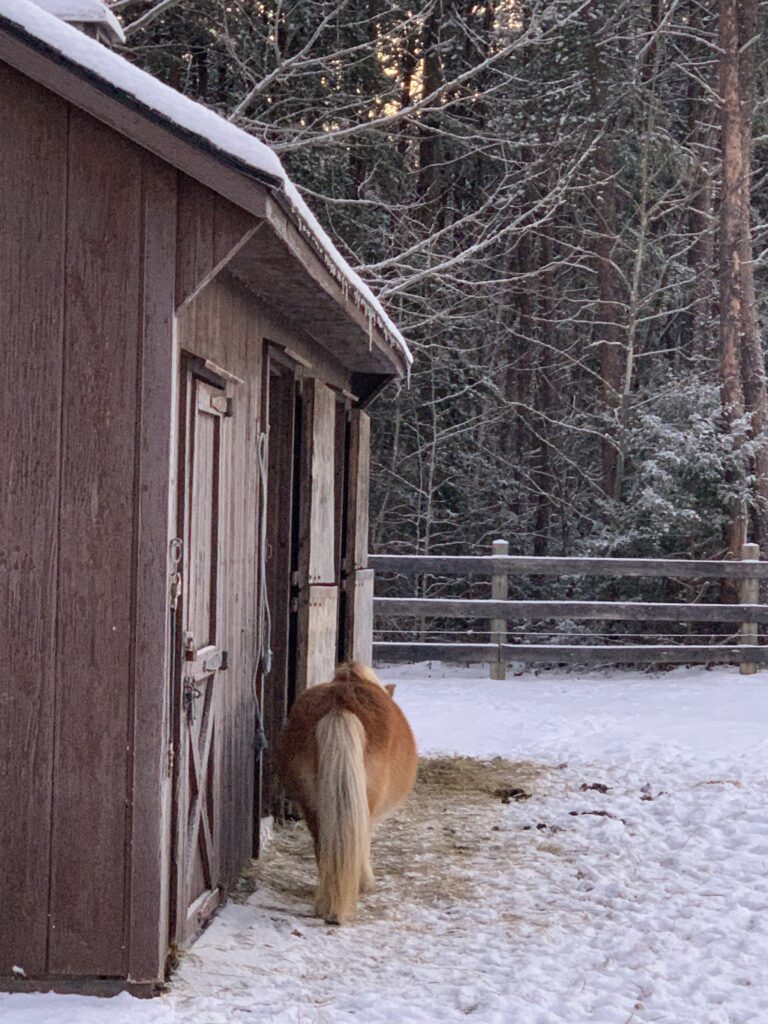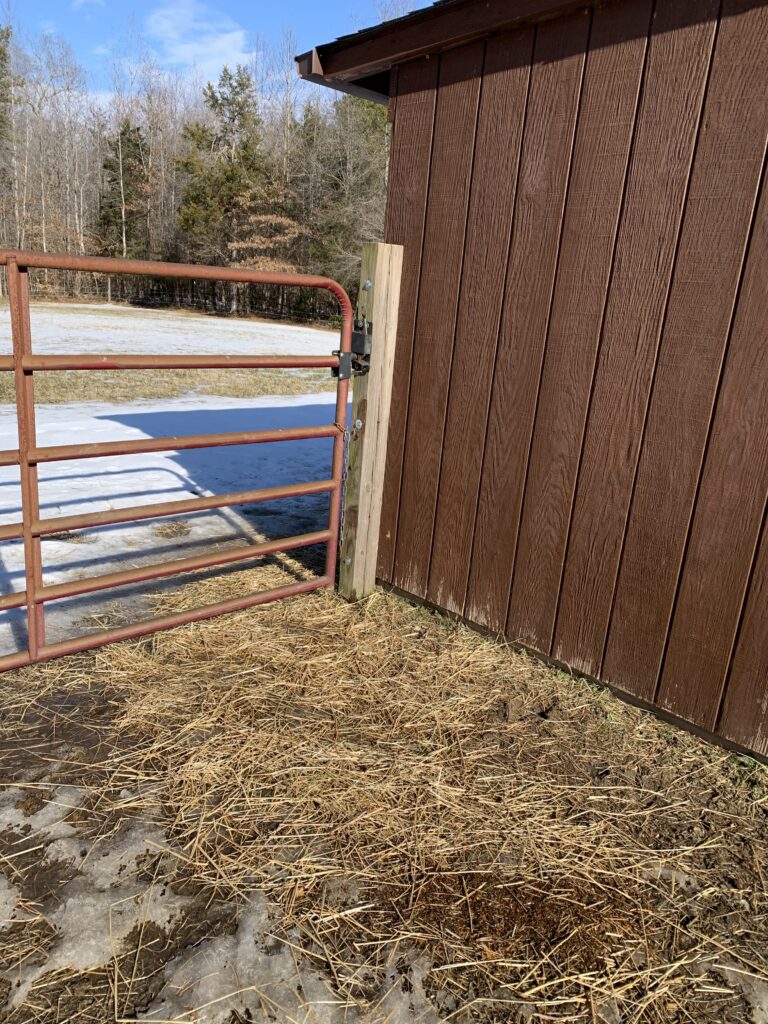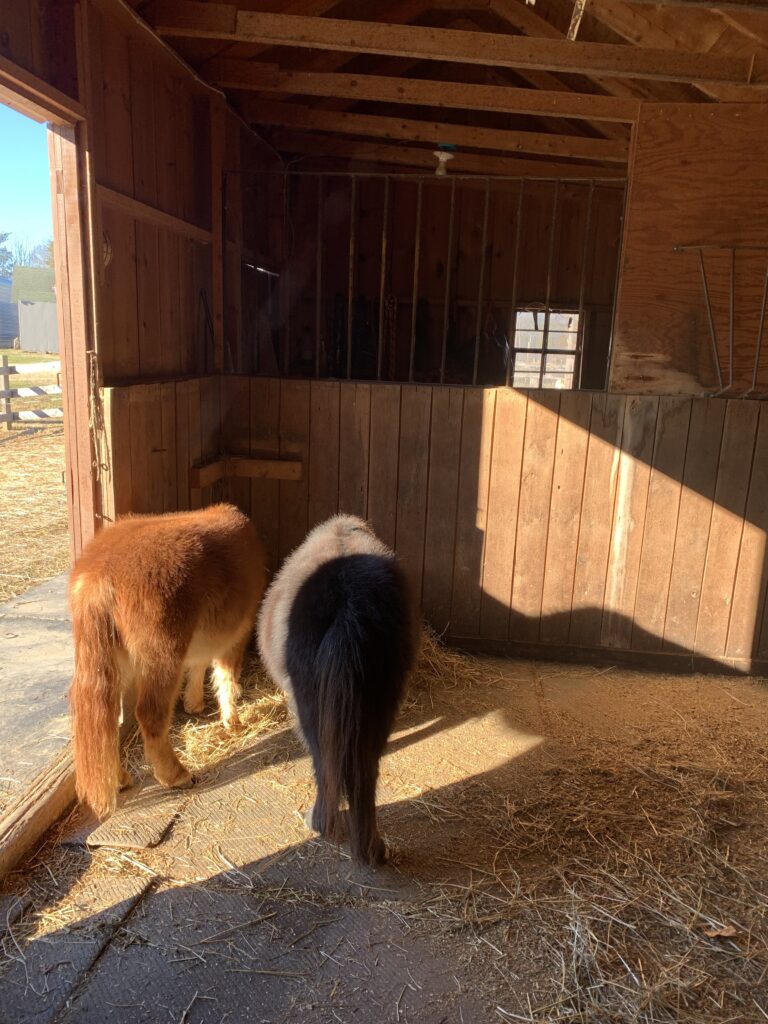First Taste of Winter Weather
In early January, we experienced our first winter storm of the season. Although we initially received around 6+ inches of fluffy snow, the precipitation eventually transitioned into a cold rain. Overnight the temperatures plummeted well below freezing and by the next day, everything was covered in a 6 inch layer of ice! Over the next several days we experienced a small amount of thawing during the daytime hours, but this quickly refroze as the sun began to set and temperatures quickly dropped. This continuous melting and refreezing process caused the ground in several spots around the farm to become incredibly slick and treacherous for horses and humans a like.
Gaining Traction
Fortunately for our minis, they had their nice dry stalls to huddle in and seek reprieve from the snow and ice covered ground. We began feeding them their hay in the corners of their run-in stalls so that they would not need to venture out unless they wanted. As temperatures began to warm, the snow and ice on the black mats which line the front of the barn began to thaw. Around this same time, the melt from the barn roof above began to drip onto them. This in turn caused them to remain wet and prone to icing over at nightfall. To improve traction, we began sprinkling remnants of uneaten hay on top of them. As the sun set and temperatures dropped, the wet hay would freeze and stick to the mats providing much needed traction. This trick seemed to really help until the melt from the roof was complete. This did however take several days.
Another area that was becoming incredibly slick was the strip of ground at the rear of the barn. Due to the orientation of our barn, this area does not receive much direct sunlight, which significantly prolongs the melting process. The slow melt and refreeze of this stubborn patch of ice was beginning to make accessing the haybarn at the rear of the barn hazardous. Luckily the minis did not need to enter this area until after it thoroughly thawed. But until then, we worked to keep the super slippery patch covered with more leftover hay and repurposed grass clippings that we found at the edge of the woods. Who knew that uneaten hay and old grass clippings from the summer before could be so useful!?!?
A Need For Warm Water
As the heart of winter approached, we had already begun to regularly break and remove thin layers of ice from the water trough in the mornings, but as the temperatures took a deep dive, we were finding it harder and harder to keep the horses’ water from firmly freezing over. This is when we began carrying them buckets of warm water. On the days when the temperatures climbed above freezing, we took them warm water first thing in the morning and again late in the evening since they were able to access the water in their trough during the daytime. But on the super cold days when the daily highs were only in the teens, the trough would constantly ice over, which is when it became necessary to carry buckets of warm water every couple of hours. We could tell that the horses were very appreciative of this as they would promptly come over to drink the warm water as soon as it had been delivered. Access to water is essential for the health and digestion of the horse and is something we must be especially mindful of when temperatures drop below freezing!
Following this first big cold snap of the season, we decided that it was time to order a deicer for our minis’ water tub. Due to the fact that one of our minis is especially inquisitive and playful, we wanted to find a deicer that was not only submersible, but that had a cage around the heating coil and a protected cord cover. It was also important that we find one that could keep the water warm enough so as not to freeze, but not so hot as to melt the plastic tub. We landed on the K&H Ultimate Stock Tank Deicer in the 250 watt variety, and we immediately put it to use. We were pleased with its design and found it to work well given our moderately cold temperatures. Living in Virginia, it is unusual for us to experience extremely cold temperatures, but we do on occasion receive short bursts of arctic air.
The Great Thaw
By the end of the second week in January, a good portion of the snow and ice had finally begun to melt, and our minis were beginning to find a little more grass to nibble on. Their daily routine was becoming more normal as they began choosing to spend more time outside of their run-in stalls. The barnyard, however, was incredibly wet and soggy. Once the larger paddock behind the barn finally thawed, the minis were able to resume grazing there, which afforded them greater access to grass and more room to roam. This also gave the barnyard a much needed chance to rest and recover following the heavy use it had undergone during the most recent stretch of harsh winter weather.
The Polar Vortex
As we approached the end of January, we began to brace for an impending Polar Vortex heading our way. Temperatures were once again predicted to drop down into the teens and single digits with daily highs remaining well below freezing. This time, thankfully, we did not have the snow and ice to contend with, and we had the help of our new handy dandy deicer to keep the water from freezing. As we navigated this next round of extremely cold weather, we were incredibly pleased with how well our little red deicer worked. Not only did the horses’ water not freeze, but it never even had the slightest skim of ice over the top. We did, however, continue to take the minis a bucket of warm water a couple of times per day during this second super cold stretch. This is because we found that our black mini, Rockstar, had become a fein for warm water. Anytime he saw us outside, he would look in our direction and become hopeful for a warm drink. Both Sweetheart and Shenanigans seemed more than content to drink from their regular water tub with the new deicer, but they too enjoyed a warm sip from time to time when it was available.
January had proven to be a very wintery month, and as it came to an end, we began to assess the pros and cons of our winter weather experiences as first time Miniature horse owners. We learned a few new tricks, found a great deicer for our smaller mini trough, and were becoming more aware of our minis’ increased hay consumption during stretches of prolonged inclement winter weather. Because we were only feeding our minis square bale hay, the increased amount fed seemed to be more poignant than when we fed our full-size horses round bale hay in winters past. After feeding hay at a significantly increased rate for several weeks, we begin to question how long our initial supply of square bales would last. And so, with plenty of hay for the moment, we began the search for another installment of suitable hay that would help us comfortably get through the spring.
We hope you have enjoyed reading about our minis and how we navigated our first taste of winter weather with them. We hope you will continue to follow us as we journey through the year. We look forward to sharing with you our experiences, tips and tricks for owning healthy, happy miniature horses!

